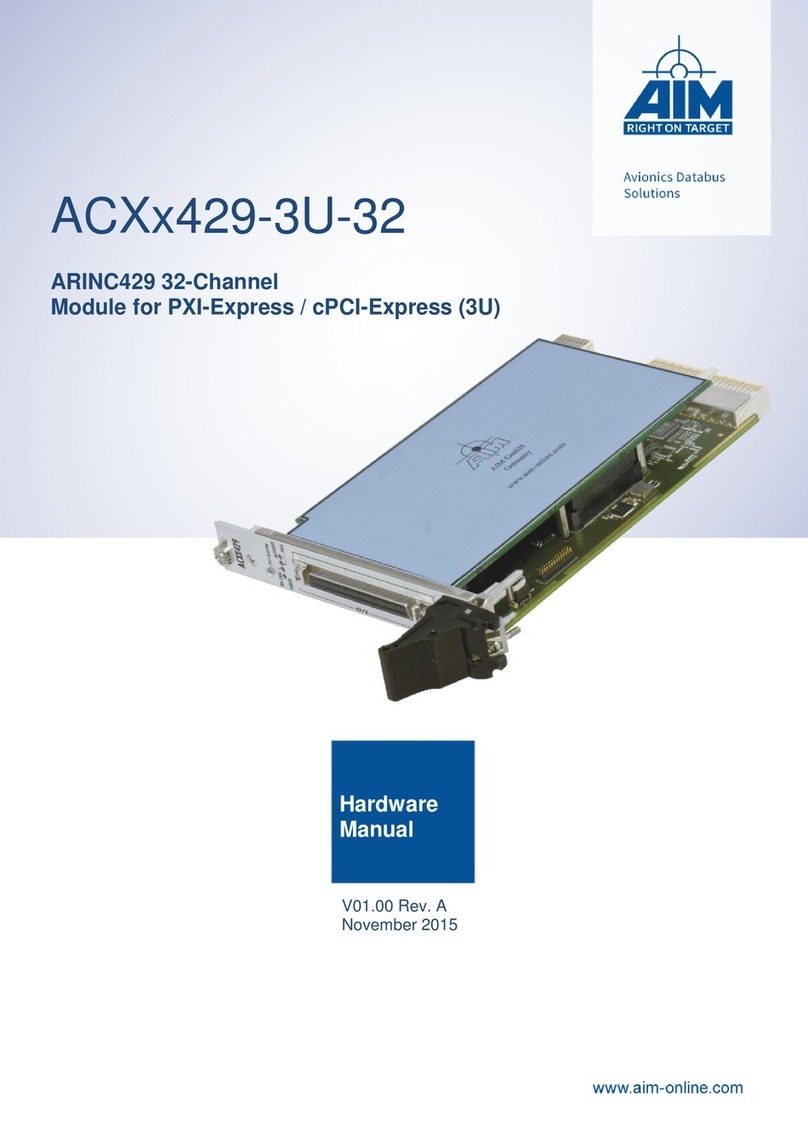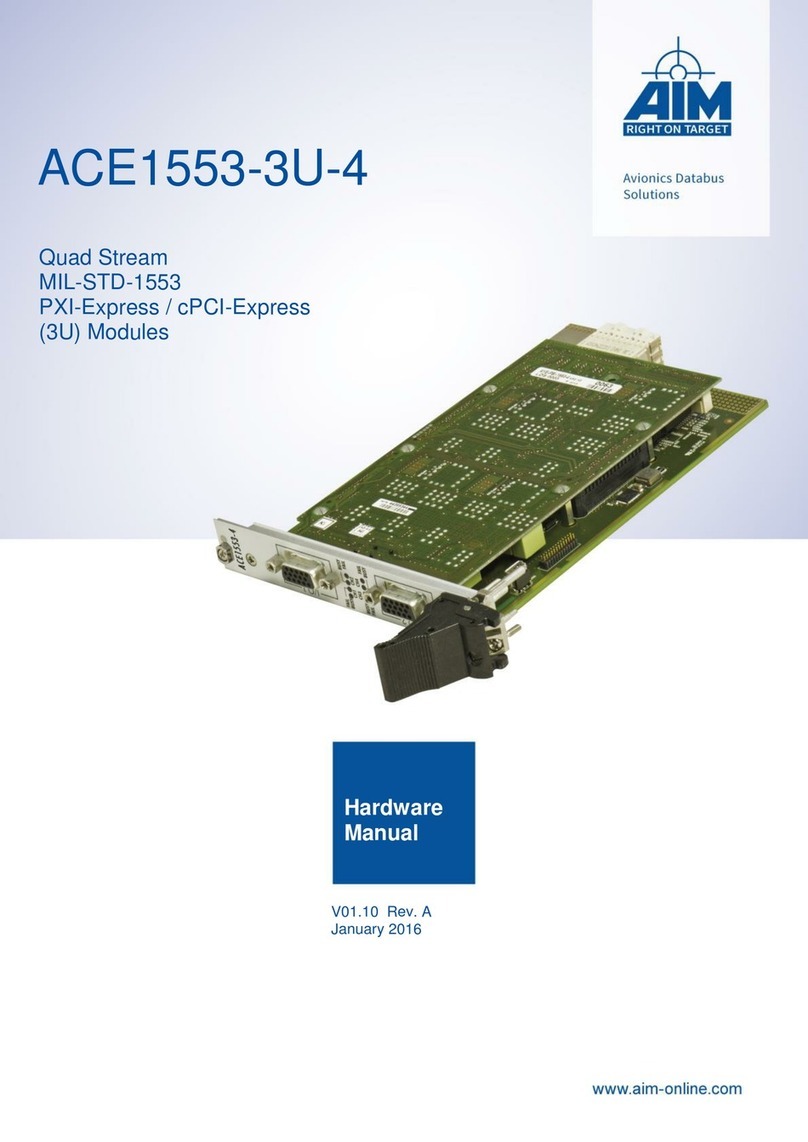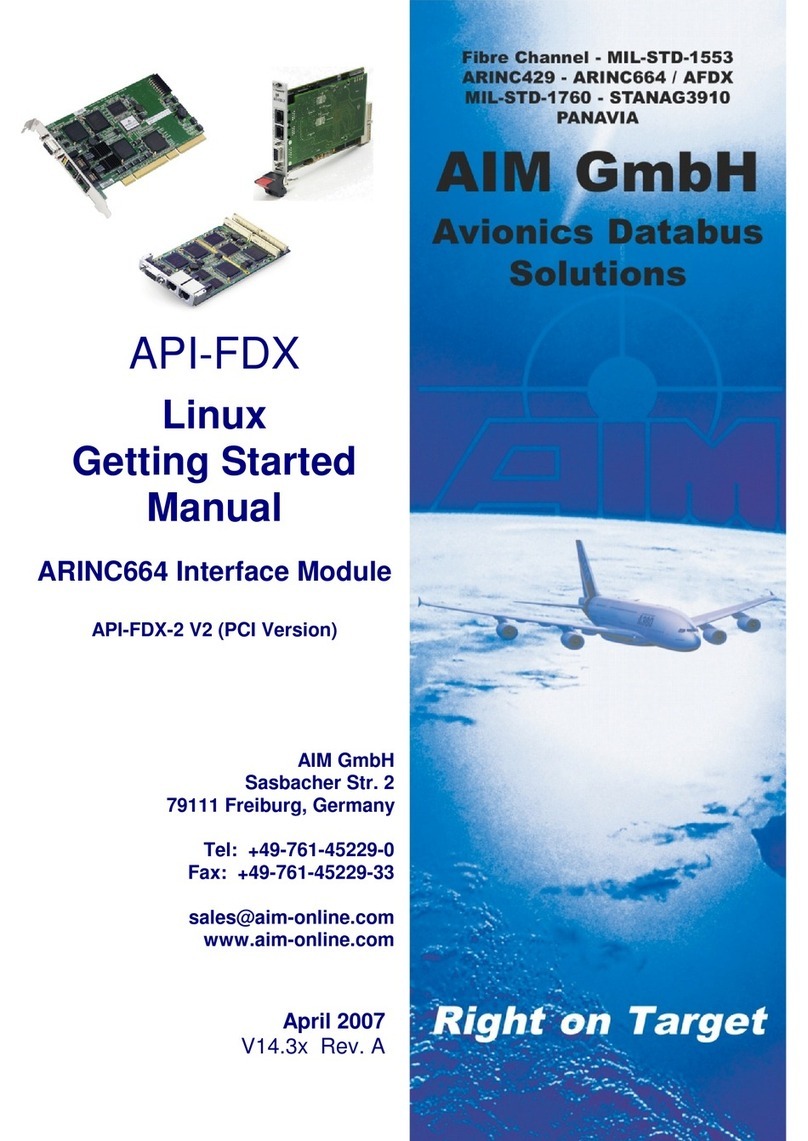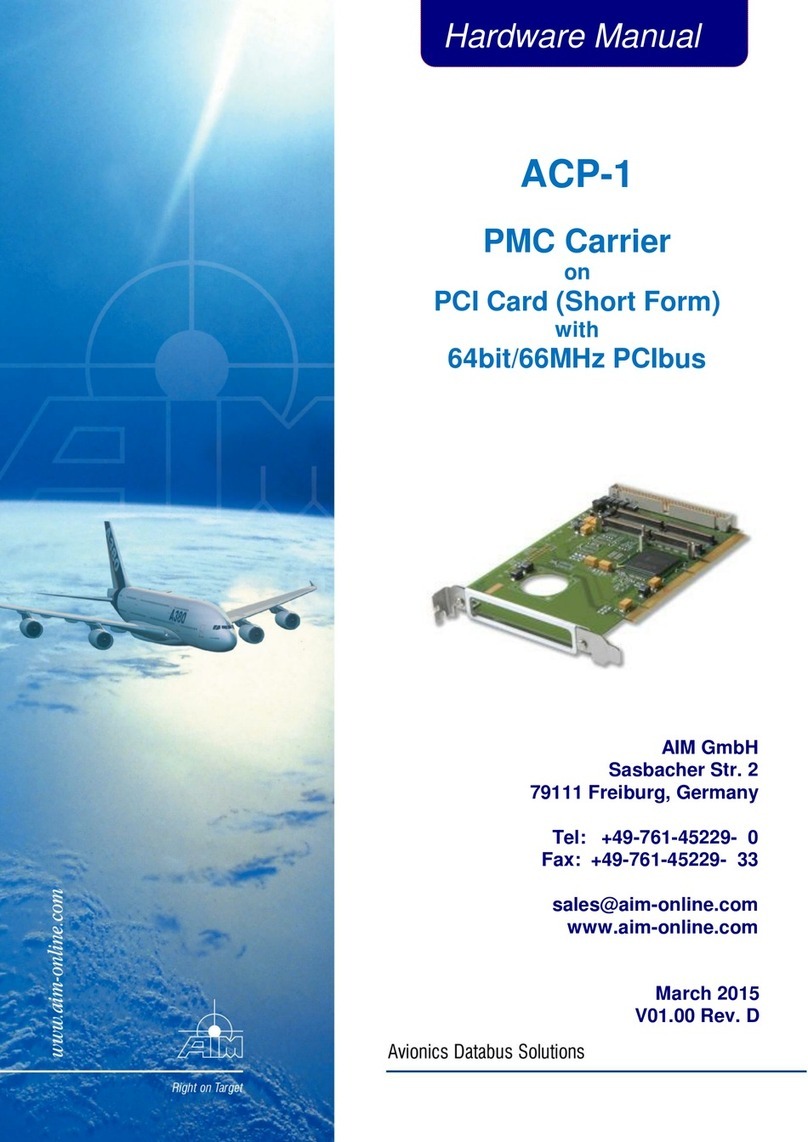
APE-FDX-2 Hardware Manual
1 INTRODUCTION
1.1 General
This document comprises the Hardware User’s Manual for the APE-FDX-2 PCIe Card.
The document covers the hardware installation, the board connections, the technical
data and a general description of the hardware architecture. For programming
information please refer to the according documents listed in the 'Applicable
Documents' section.
The APE-FDX-2 module is a member of AIM's family of advanced PCIe-Bus modules
for analysing, simulating, monitoring and testing of avionic Databus Systems.
The APE-FDX-2 module is used to simulate, monitor and inject protocol errors of AFDX
based network systems as well as common Ethernet networks with a data rate of
10/100/1000 Mbit/s. The implemented MAC features comprise two independent
transmitters and two independent receivers, each capable of transmitting or receiving
data at line rate concurrently. The transmitters feature multiple error injections and
timing possibilities with several start modes like start on IFG timing, start on absolute
timing, start on trigger events or grouping of frames to packets with packet group wait
timing. The receivers feature multiple error detection, time tagging of each received
frame with 100ns resolution, inter frame gap measurement with up to 40ns resolution
(1000Mbit: 8ns) and statistic features. Redundant operation of both ports is also
implemented with additional features like frame skew between both ports.
The hardware architecture provides ample resources (i.e. processing capability and up
to 3GByte of DDR3 memory) to guarantee, that all specified interface functions are
available concurrently and to full performance specifications.
The advanced architecture uses a SoC with integrated Dual-Core RISC processors,
tightly coupled to a large programmable logic. Core 1 of the Dual-Core processors is
running a Linux Operating system, supporting the Target Software application for high-
level protocol simulation and analysis. For fulfilling the real-time requirements of avionic
type networks, Core 2 is running a dedicated application for controlling the low-level
real-time functionality implemented within the programmable logic.
A freewheeling IRIG-B Time code Encoder/Decoder is implemented to satisfy the
requirements of 'multi-channel time tag synchronization' on the system level. The IRIG-
B compatible amplitude modulated sinewave output allows the synchronization of any
external module implementing IRIG-B time stamping.
































